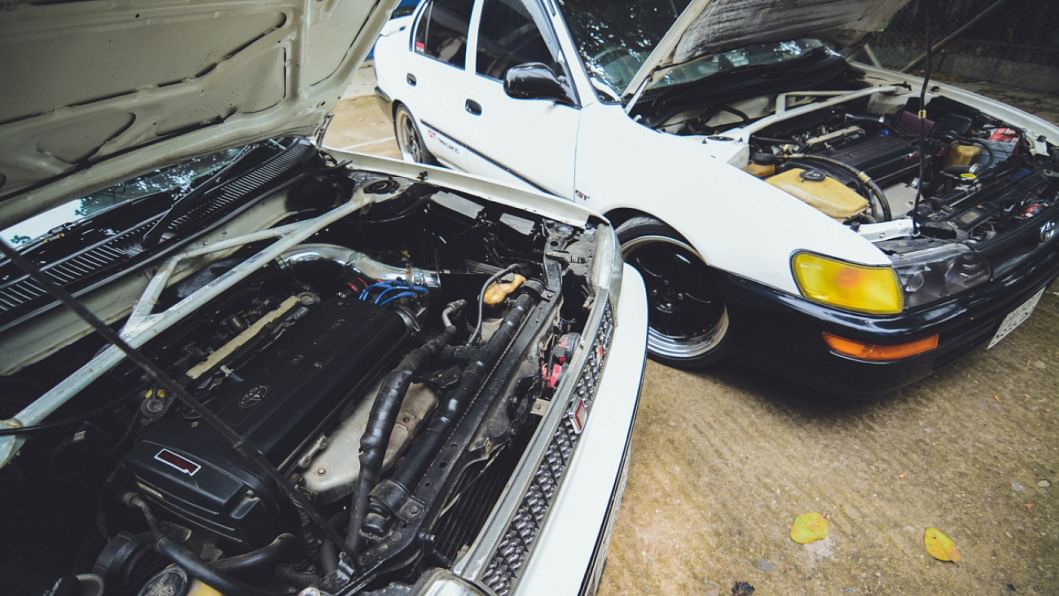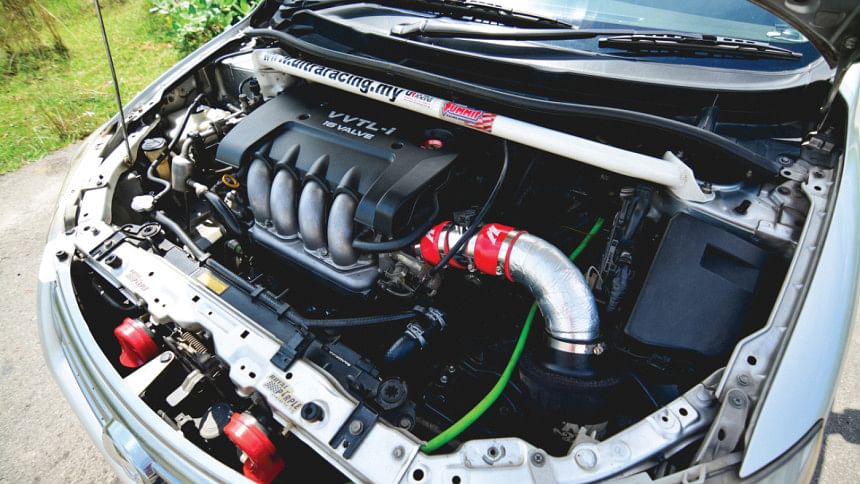Old school vs new upstarts

We've all seen the way the 1.6 4AGE 4 cylinder, in blacktop and silvertop forms, and the B16A as well as the B20B have dominated the local tuning scene. When it comes to new cars, though, performance engines have been largely absent for quite a while, due to the relative lack of interest in newer platforms.
It's all changing, though. As evidenced by the 2ZZ-GE Celica engine powered Premio featured this week, there's a surge of interest in performance modifications for newer cars. The 2ZZ-GE is one of the only feasible new engine to swap into other cars, since it has a good balance of displacement, horsepower and torque, and reliability.
What about the past favourites, though? The 4AGE, a high strung, 9000 RPM kissing engine, is still swapped into anything with wheels and a Toyota badge from the 90's. At 1.6 litres displacement, the 4AGE is neither a big engine nor is it as chalk full of sensors as the 2ZZ-GE, so why is it so popular? The relative lack of electronic trickery is an advantage. It is well proven that older engines with less sensor dependency responds well to bolt on modifications such as aftermarket headers and intake/exhaust. With the 4AGE, a good intake setup that retains the MAF (Mass Air Flow) sensor and a free-flowing exhaust along with lightweight pulleys, you'll see an impressive gain in horsepower/torque. The same goes for the 3SGE, the older and bigger brother to the 4AGE, as well as engines from Honda, Mitsubishi and Nissan.

Why are newer engines less responsive to bolt-on mods? The answer lies in the role of the engine management units in these engines. The ECU in the 2ZZ-GE is leap years ahead of the 4AGE or 3SGE's OBD-I (On Board Diagnostics version 1) systems, and even in the most basic modern engine, the ECU has a lot more control over the vital functions of the engine, such as throttle position, A/F ratio, and so on. When you throw in a free flowing intake or exhaust into the mix, the ECU takes the higher air-flow as a problem and all sorts of tiny adjustments are made that make the engine performance erratic. What does the doctor recommend? If you want to put bolt-ons on a new gen engine, take time to remap the ECU.
That's one major advantage of newer engines. Due to OBD-II, the brains of the engine can be easily fettled with and monitored. All new cars come with a OBD-II port underneath the dashboard that allows easy access via laptop or even smartphone, something that was considered unthinkable back in the day.
Our resident engine geek has this to say about the tug of war: "The 2zz has a greater torque number, but the power-band is narrow, whereas the 4age it's spread out quite nicely. Its hard to find a fresh 4AGE these days since it's a quite aged motor, but honestly I've ridden in 4AGE propelled AE100s and the 2ZZ seemed more torquey to me. Aside from that since the 2zz is a newer motor, it should be more reliable, gets great fuel economy, better than the stock 1NZFE in some cases."
Kazi Hamidur Rahman Russell, owner of the 2ZZ-GE swapped Axio we featured on Shift a while back, says, "The older engines are all proven and cheap to swap in and use, but the 2ZZ-GE is a great option if anyone wants to make reliable power and cost isn't a huge factor."

He has owned several high performance cars, including B20 Hondas, 4AG, 3SG and 3SGTE powered Toyotas. When we ask him what the secret to making some proper horsepower gains with older platform cars is, he says a good, genuine and branded aftermarket air intake, properly executed exhaust setup, and a good ignition setup is more than enough to get some solid power to the ground.
It also has a lot to do with the way the engine feels on the throttle and the sounds it makes. The efficient, politically correct nature of the 2ZZ means it has a muted purr that turns into a low pitched grunt in the higher RPM range, while the 4AGE, mainly due to the quad throttle intake system, has a guttural snarl almost anywhere on the rev counter, spitting and growling at low speeds and an absolute racket at full hum.
So who wins the battle of old versus new? We at Shift are definitely biased towards the older, mechanical ways of making power, but we are almost won over by the appeal of newer performance builds. We'd need to sample more before giving a verdict, so go grab 2ZZs and do more swaps.

 For all latest news, follow The Daily Star's Google News channel.
For all latest news, follow The Daily Star's Google News channel. 



Comments